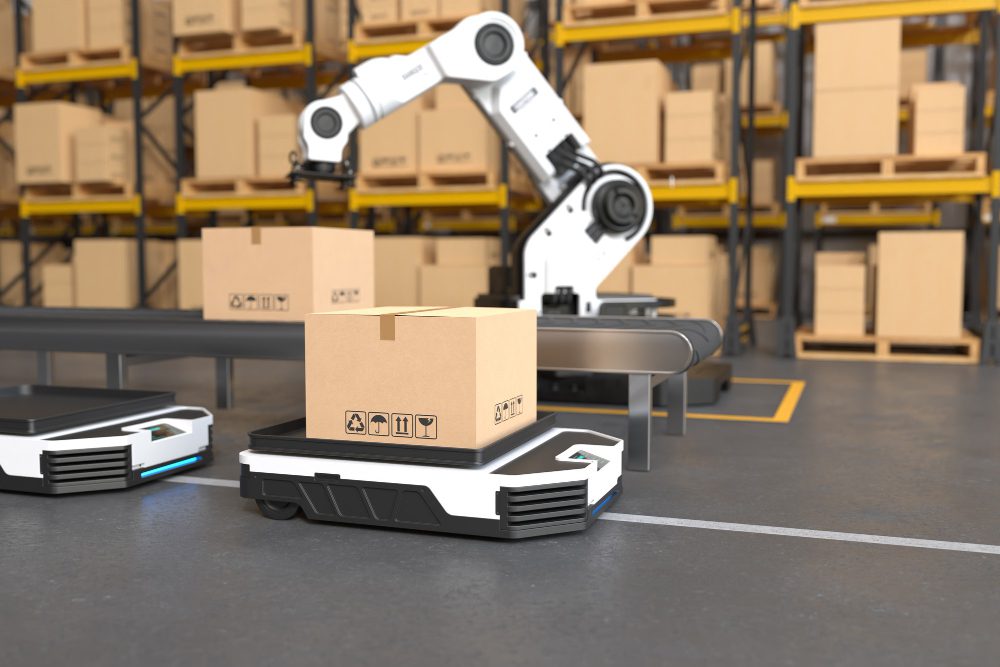Automated packaging systems have witnessed significant advancements in recent years, revolutionizing the efficiency and innovation of packaging processes. This article explores the evolution of automated packaging, highlighting key benefits and cutting-edge technologies that drive its effectiveness.
By eliminating manual labor and streamlining operations, these systems enhance overall efficiency in packaging operations. Additionally, this article discusses future trends in automated packaging that hold promise for further optimization and improvement. It provides a concise and informative overview of the intersection between efficiency and innovation in the realm of automated packaging.
Table of Contents
The Evolution of Automated Packaging
The evolution of automated packaging can be traced back to the early 20th century when machines were first introduced to streamline and improve the efficiency of packaging processes. This marked a significant shift from manual labor to mechanized systems in the packaging industry.
Over time, there have been several evolutionary changes in automated packaging technologies driven by advancements in engineering, electronics, and computer science. These changes have not only enhanced production speed but also improved accuracy and reliability.
Historical context is important in understanding this progression as it highlights the gradual transition from simple mechanical devices to sophisticated computer-controlled systems.
Today, automated packaging solutions encompass a wide range of technologies, such as robotic arms, conveyor belts, and vision systems that work collaboratively to optimize packaging operations.
Key Benefits of Automated Packaging Systems
One of the significant advantages of employing automated packaging systems is their ability to streamline operations and improve productivity. These systems have a substantial sustainability impact by reducing waste, minimizing material usage, and optimizing energy consumption.
By automating packaging processes, companies can eliminate human errors and ensure consistent quality control, resulting in cost savings through reduced product loss and rework. Automated systems also enable faster production cycles with higher throughput rates, leading to increased efficiency and overall productivity gains.
Furthermore, these systems offer flexibility in handling various package sizes and shapes, allowing for customization based on customer requirements.
Cutting-edge Technologies in Automated Packaging
Cutting-edge technologies in the field of automated packaging have revolutionized the industry by introducing advanced features and functionalities. Robotic advancements play a crucial role in automating the packaging process, leading to increased efficiency and precision.
These robots are equipped with state-of-the-art sensors and actuators that enable them to handle a wide range of products with varying shapes and sizes. They can accurately pick, sort, and package items at high speeds, reducing human error and improving overall productivity.
Additionally, AI integration further enhances automated packaging systems by enabling real-time data analysis, predictive maintenance, and intelligent decision-making capabilities. By leveraging machine learning algorithms, these systems continuously optimize their operations to minimize waste, maximize throughput, and adapt to changing production demands.
The combination of robotic advancements and AI integration has propelled the automated packaging industry forward, offering innovative solutions for companies looking to streamline their packaging processes.
Enhancing Efficiency in Packaging Operations
To improve the effectiveness of packaging operations, it is crucial to implement strategies that optimize resource allocation and minimize time wastage.
One way to achieve this is through robotic advancements and real-time monitoring.
Robotic advancements in packaging have revolutionized the industry by automating various stages of the process, such as sorting, filling, labeling, and palletizing. These robots can work at high speeds with precision and accuracy, reducing human error and increasing efficiency.
Real-time monitoring systems play a vital role in enhancing efficiency by providing instant feedback on production status, identifying bottlenecks or issues in the process, and allowing for timely adjustments to be made.
Future Trends in Automated Packaging
Future trends in packaging automation are being driven by advancements in technology, which are revolutionizing the industry and leading to increased productivity and cost savings.
One of the key trends is the adoption of smart packaging solutions. These solutions utilize sensors and data analytics to provide real-time information on product quality, shelf life, and location during transit. Smart packaging enables better inventory management, reduces waste, and improves overall supply chain efficiency.
Another important trend is the use of sustainable packaging materials. As environmental concerns continue to grow, companies are exploring innovative materials such as biodegradable plastics, compostable films, and recyclable alternatives to traditional packaging materials. By incorporating these sustainable options into their operations, businesses can reduce their carbon footprint while meeting consumer demands for eco-friendly products.
Overall, future trends in automated packaging focus on integrating technology for greater efficiency and sustainability in the industry.
Featured Image by user6702303 on Freepik




